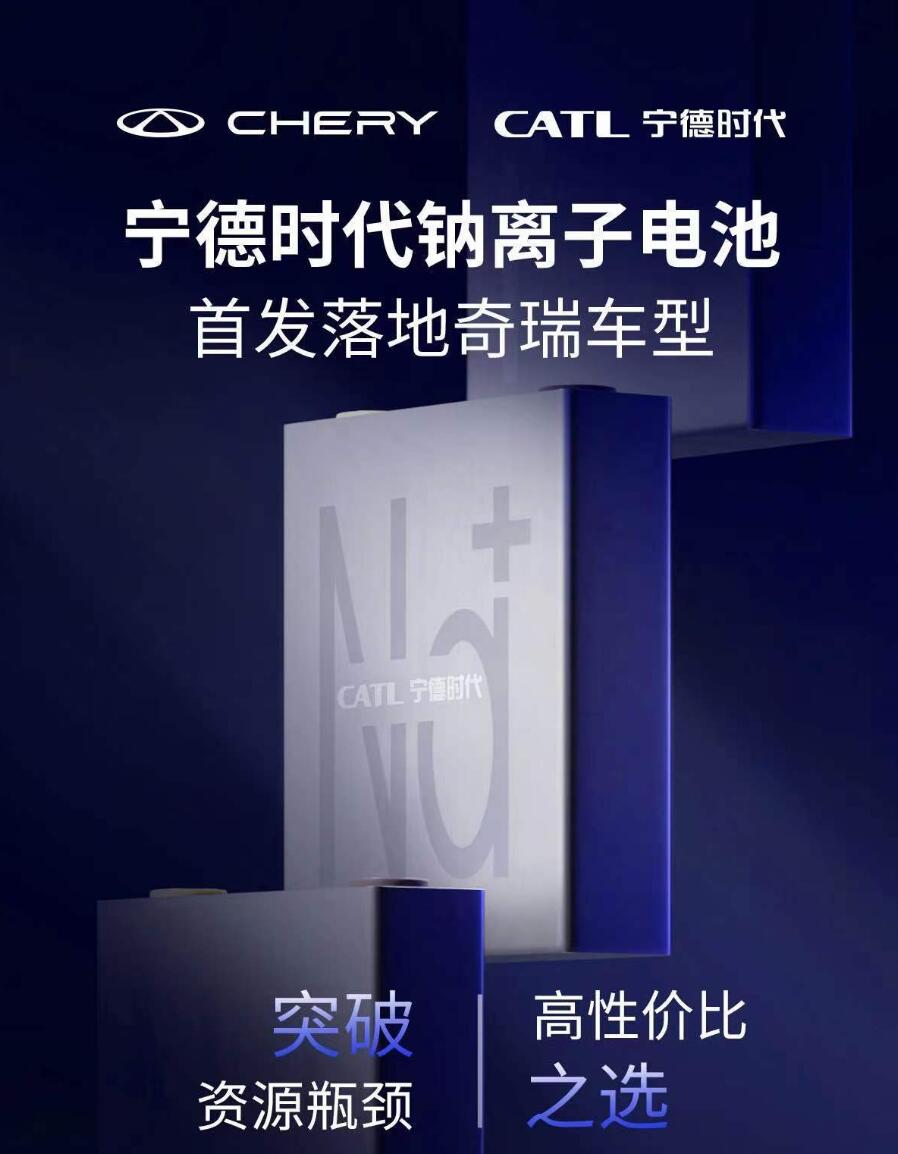Chery to be 1st automaker to adopt CATL's sodium-ion batteries
In the passenger car segment, sodium-ion batteries can generally meet the needs of models with a range of up to 400 kilometers, a CATL executive previously said.
CATL's sodium-ion batteries are not far from starting to be installed in vehicles, after the Chinese power battery giant unveiled the new batteries in July 2021.
CATL's sodium-ion batteries will first be used in Chery's models, the battery maker announced today.
Sodium-ion batteries will break through resource bottlenecks and is a cost-effective choice, CATL said, without giving further details.
CATL will hold a zero-carbon strategy launch event from 15:00 to 15:20 on the first day of the Shanghai auto show on April 18. Its booth at the event is 8B05 in Hall 8.2.
CATL unveiled its first-generation sodium-ion battery on July 29, 2021, saying that the energy density of the cell alone had reached 160Wh/kg.
The company said at the time that the energy density of the first-generation sodium-ion battery was slightly lower than that of the lithium iron phosphate battery. However, it has obvious advantages in low-temperature performance and fast charging, especially in high-power application scenarios in alpine regions.
CATL's next-generation sodium-ion battery energy density will exceed 200Wh/kg, it said in 2021, adding that the company has already started the industrialization layout of sodium-ion batteries and plans to form a basic industrial chain in 2023.
CATL did not mention the possible areas of use for sodium-ion batteries in its brief launch event at the time, although industry sources and analysts generally believe that the batteries, with their low energy density, will probably be used mainly in energy storage and two-wheeled vehicles.
On November 29, 2022, Huang Qisen, vice president of CATL research institute, said at a forum that sodium-ion batteries are expected to be carried in electric vehicles, the first time someone from the power battery giant publicly mentioned the prospect of using this new battery in passenger cars.
As for applications in passenger cars, sodium-ion batteries generally meet the needs of models with a range of up to 400 kilometers, Huang said at the forum.
With its pioneering AB battery system integration technology, CATL has achieved a mix of sodium ion and lithium ion, allowing them to complement each other and thus increase the energy density of the battery system, Huang said at the time.
This approach is expected to enable sodium-ion batteries to support electric vehicle models with a range of up to 500 kilometers, he said, adding that models with that range account for 65 percent of the market share, meaning the use of sodium-ion batteries is promising.
Notably, two months ago, an unnamed Chinese power battery maker had already begun fitting sodium-ion batteries into passenger cars.
On February 23, Hina Battery unveiled three sodium-ion battery cell products and announced a partnership with Anhui Jianghuai Automobile Group Corp (JAC), one of whose models became the first to carry sodium-ion batteries.
Hina Battery and Sehol, a joint venture between JAC and Volkswagen Anhui, have jointly built a test vehicle with sodium-ion batteries based on the latter's Sehol E10X model.
The test vehicle has a battery pack with a capacity of 25 kWh and an energy density of 120 Wh/kg. The model has a range of 252 km and supports fast charging from 3C to 4C. The battery pack uses cells with an energy density of 140 Wh/kg.
Hina Battery becomes 1st battery maker to put sodium-ion batteries in EVs in China


